Muhammad Rasheed's Blog, page 235
July 27, 2014
An Embrace of True Art in a High Culture
“You know who to call when you have ghosts, but who do you call when you have monsters?”
One of my guilty pleasures growing up was this goofy little movie called The Monster Squad that came out in 1987, so I probably saw it in ’88 or ’89. Featuring a group of kids saving the world from Count Dracula and his team of classic Universal beasties, it was a fun and quotable popcorn movie. There were elements in the kid dynamic that reminded me of The Loser’s Club from Stephen King’s excellent It novel, combined with the super strength demonstrated by Dracula as he casually smashed a bunch of cops, and a really great werewolf transformation ending in the monster bursting out of a phone booth Underdog style.
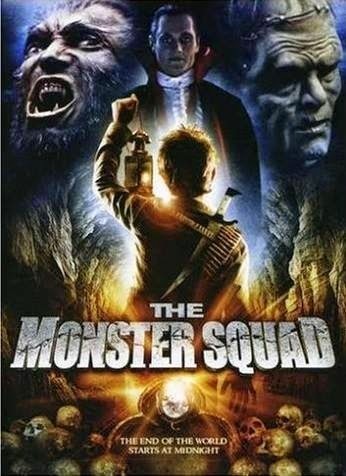
The Monster Squad was a derivative, eclectic mix of a bunch of stuff I liked as a 19 year old: monsters with super powers, the knockoff reuniting of a favorite team of characters from one of my favorite books, and fun pre-CGI special FX. I considered it to be really cool. One of the strongest scenes in it was near the beginning, before the monster part started. The kids would walk past this old house where this reclusive old man lived and made up all kinds of crazy stuff about what he was like. They referred to him as “The Scary German Guy.” But when they finally met him out of desperation, he turned out to be very nice and helpful - and would later function as the Abraham Van Helsing of The Monster Squad basically - to help them save the world. Later on something about that part of the film caused an enormous sense of Déjà vu when I read a popular novel, and then I remembered.
The Scary German Guy was Boo Radley from the book To Kill a Mockingbird. They just ripped that entire part off and it pisses me OFF. Yes, in a Frankenstein’s monster of a movie composed of component parts of a lot of different genre elements, that’s the part that ruins the film for me… the blatant theft of another book’s scene. Not just their version of a similar scene. No, it’s the same. Alex Haley used Harold Courlander’s 1967 heavily-researched book The African as a guide for aspects of his own "historical novel" Roots, but they are clearly not the same book despite the controversy. If you read them both back-to-back you will definitely not feel like you just read the same book twice. By contrast The Scary German Guy/ Boo Radley issue was an actual theft, and the casual allowance of such things in film and other fiction-fueled industries – treating it like its “normal” and okay to do it – is the reason behind a lot of poor quality, and the overwhelming sensation that we’re watching the same movies and shows, and reading the same books over and over and over again.
I think it’s time to actively start encouraging originality in commercial art as demonstration of a mature, sophisticated and intelligent adult mindset, while dialing back on rewarding “tributes” and the usage of classic literature plots and figures as templates. If we notice that you used the plot synopsis of Bram Stoker’s Dracula as the rip-off template for your novel, you should be called out as a thief and a hack, and you should not be praised for it. At all. If we notice that your villain is merely Iago from Shakespeare’s Othello with a different name, you should not be praised for it. Recycling the same work over and over again is not a hallmark of progress but of stagnation. You’ve now abandoned “art.” There should be a completely different rating mark, and a completely different genre category for those kinds of works (“F” for Flippant, or “H” for Hack), and they should be isolated away from serious efforts of original, honest self-expression and never up for any serious award. This would include ‘B’ grade films like The Monster Squad, as well as any pseudo-high brow works that pretentiously rip off the classics that are so often placed in the running for nomination for our most prestigious awards. They all should be grouped in the same category, and treated little different than fan-fiction. This is the type of work that should be considered immature “kid stuff,” actively discouraged and even stigmatized unless it is only done as practice exercises. Of course we cant stop the capitalism machine from making the property commercially successful if the masses like it and want to spend their money on it, but that is a separate matter from an artistic intrinsic value. Honest self expression and originality should be praised highly by the professional critic (to aid in finally justifying that job function) and in learning institutions throughout the world to cultivate a true appreciation for the arts.
One of my guilty pleasures growing up was this goofy little movie called The Monster Squad that came out in 1987, so I probably saw it in ’88 or ’89. Featuring a group of kids saving the world from Count Dracula and his team of classic Universal beasties, it was a fun and quotable popcorn movie. There were elements in the kid dynamic that reminded me of The Loser’s Club from Stephen King’s excellent It novel, combined with the super strength demonstrated by Dracula as he casually smashed a bunch of cops, and a really great werewolf transformation ending in the monster bursting out of a phone booth Underdog style.

The Monster Squad was a derivative, eclectic mix of a bunch of stuff I liked as a 19 year old: monsters with super powers, the knockoff reuniting of a favorite team of characters from one of my favorite books, and fun pre-CGI special FX. I considered it to be really cool. One of the strongest scenes in it was near the beginning, before the monster part started. The kids would walk past this old house where this reclusive old man lived and made up all kinds of crazy stuff about what he was like. They referred to him as “The Scary German Guy.” But when they finally met him out of desperation, he turned out to be very nice and helpful - and would later function as the Abraham Van Helsing of The Monster Squad basically - to help them save the world. Later on something about that part of the film caused an enormous sense of Déjà vu when I read a popular novel, and then I remembered.
The Scary German Guy was Boo Radley from the book To Kill a Mockingbird. They just ripped that entire part off and it pisses me OFF. Yes, in a Frankenstein’s monster of a movie composed of component parts of a lot of different genre elements, that’s the part that ruins the film for me… the blatant theft of another book’s scene. Not just their version of a similar scene. No, it’s the same. Alex Haley used Harold Courlander’s 1967 heavily-researched book The African as a guide for aspects of his own "historical novel" Roots, but they are clearly not the same book despite the controversy. If you read them both back-to-back you will definitely not feel like you just read the same book twice. By contrast The Scary German Guy/ Boo Radley issue was an actual theft, and the casual allowance of such things in film and other fiction-fueled industries – treating it like its “normal” and okay to do it – is the reason behind a lot of poor quality, and the overwhelming sensation that we’re watching the same movies and shows, and reading the same books over and over and over again.
I think it’s time to actively start encouraging originality in commercial art as demonstration of a mature, sophisticated and intelligent adult mindset, while dialing back on rewarding “tributes” and the usage of classic literature plots and figures as templates. If we notice that you used the plot synopsis of Bram Stoker’s Dracula as the rip-off template for your novel, you should be called out as a thief and a hack, and you should not be praised for it. At all. If we notice that your villain is merely Iago from Shakespeare’s Othello with a different name, you should not be praised for it. Recycling the same work over and over again is not a hallmark of progress but of stagnation. You’ve now abandoned “art.” There should be a completely different rating mark, and a completely different genre category for those kinds of works (“F” for Flippant, or “H” for Hack), and they should be isolated away from serious efforts of original, honest self-expression and never up for any serious award. This would include ‘B’ grade films like The Monster Squad, as well as any pseudo-high brow works that pretentiously rip off the classics that are so often placed in the running for nomination for our most prestigious awards. They all should be grouped in the same category, and treated little different than fan-fiction. This is the type of work that should be considered immature “kid stuff,” actively discouraged and even stigmatized unless it is only done as practice exercises. Of course we cant stop the capitalism machine from making the property commercially successful if the masses like it and want to spend their money on it, but that is a separate matter from an artistic intrinsic value. Honest self expression and originality should be praised highly by the professional critic (to aid in finally justifying that job function) and in learning institutions throughout the world to cultivate a true appreciation for the arts.
Published on July 27, 2014 04:17
March 23, 2014
Popeye versus Hulk by M. Rasheed
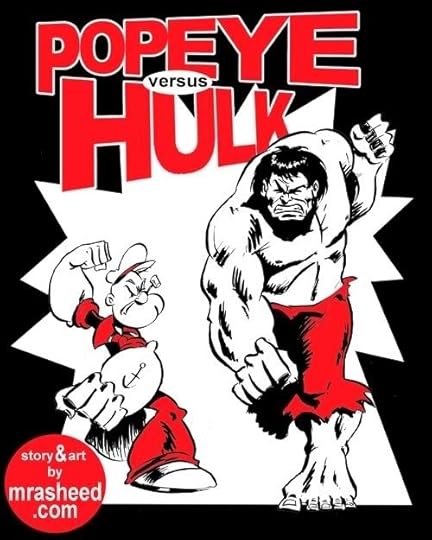
Popeye the Sailor and the Incredible Hulk are two of my all time favorite characters. As a frequent visitor and member of the now sadly gone blacksuperhero.com message boards, we comic fans would often engage in hypothetical “What If--?” battles. And as a cartoonist who has often associated with other cartoonists as well as comic fans, I know for a fact that the Popeye versus Hulk one is a popular one. With the publishing capabilities of the Internet at my disposal, as well as a game audience willing to receive it, this story pretty much poured out of me. I kept it simple, but I also made sure I kept the two in character, and behaving/ responding the way they should.
CLICK HERE to read the webcomic in its entirety.
This tale was developed as fan-fiction, a labor of love, and is not intended for profit, or as any kind of competition against the companies that own them. I only wished for other fans of the characters to enjoy the story.
Popeye and the Hulk are registered trademarks of king Features Syndicate and the Marvel Comics group respectively.
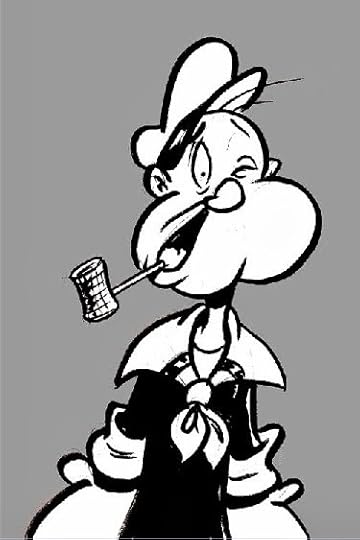
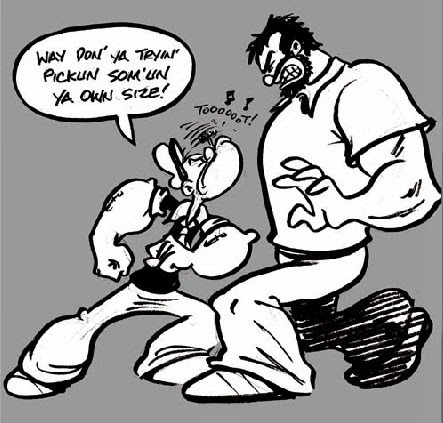
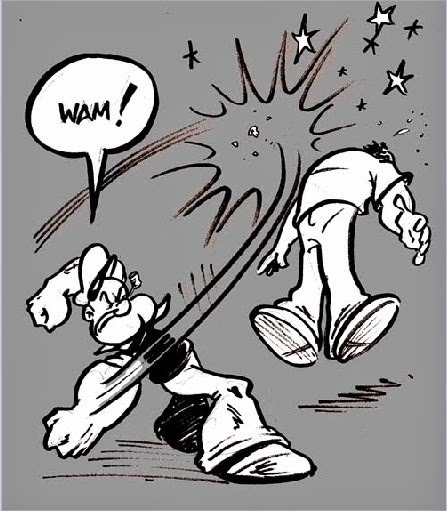
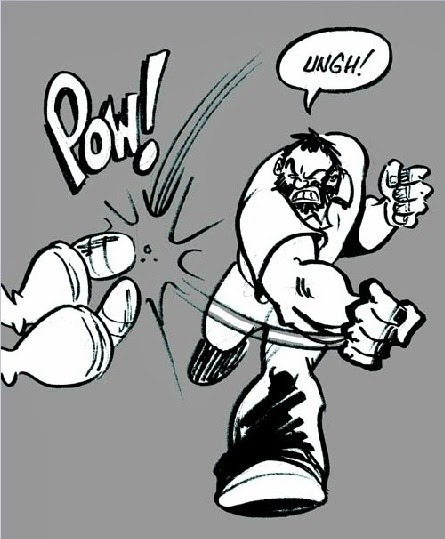
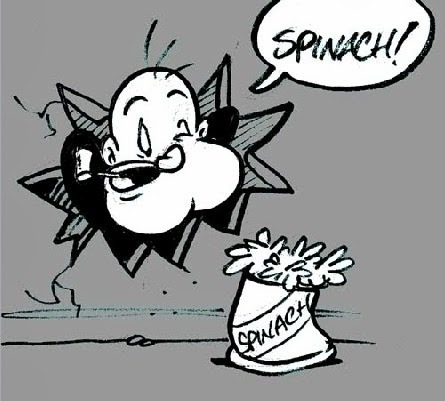
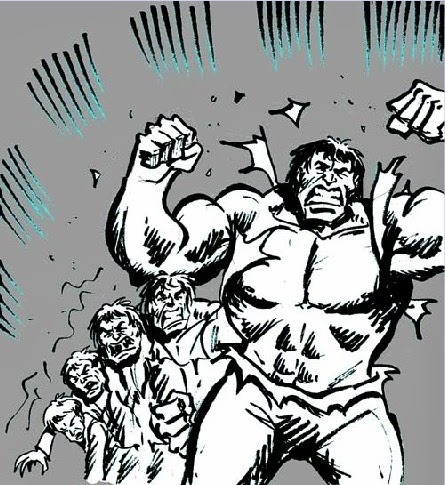

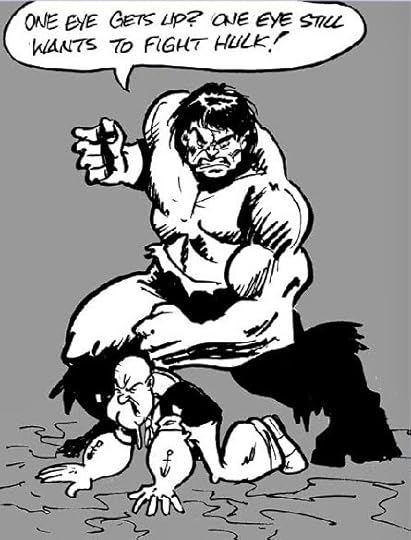
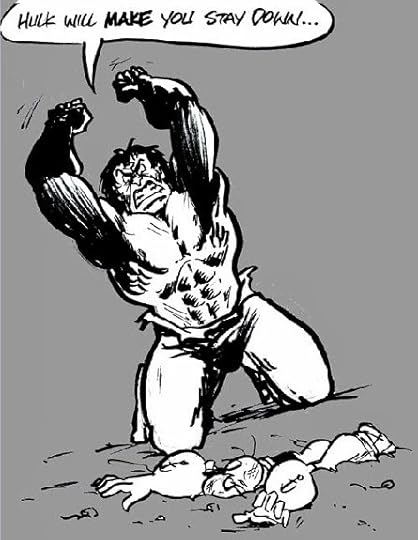
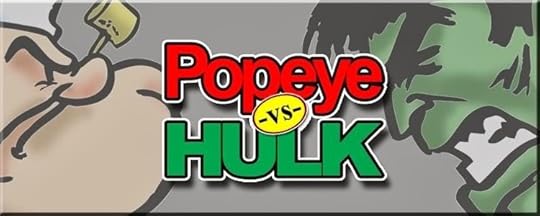
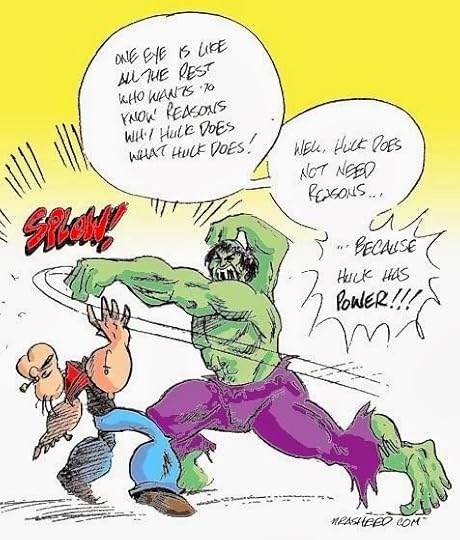
Published on March 23, 2014 13:34
March 22, 2014
BOOK REVIEW: Songs of the Dying Earth
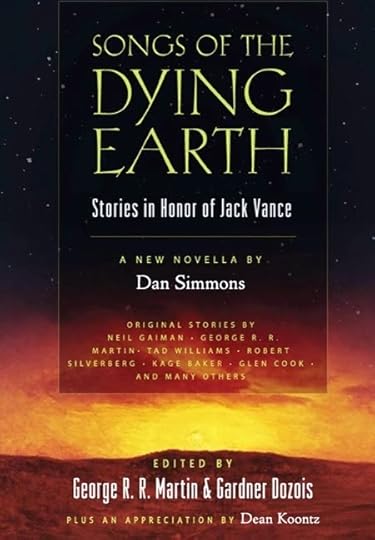
This was a tribute anthology by a group of professional sci-fi and fantasy authors, all of them fans of Jack Vance's Tales of the Dying Earth. They each wrote an original short story that took place during Vance's fictional distant future. It was okay. Of the 22 tales in the anthology, 4 were awesome, 6 were good, 2 were mediocre, and the remaining 10 ranged from simply boring to really bad. Over-all it was worth the read.
In Jack Vance’s truly great Tales of the Dying Earth, the world is ancient beyond memory, with the cycle of human civilizations having risen and fell into ruin, risen and fell into ruin, risen and fell into ruin tens of millions of times throughout the Aeons. In many of those more advanced civilizations science evolved to a very high level, to a state of magic, creature-based technology that literally dipped into other universes in order to function. Even when the civilization inevitably collapsed in the usual ritual, some of that lore remained to be absorbed into other civilizations, sometimes to build upon, more often to use side by side with other tech. And all of this happened many, many times throughout human history. The science-magic demonstrated by the beings of the Dying Earth tales are an eclectic mixture of lore saved from throughout at least the previous few Aeons, with some occasionally inspired innovations from those practitioners whose tales we've followed and come to love. Even though book descriptions, and even some reviewers, have been fond of saying that “science has given way to magic,” this is actually not true. The magic demonstrated in Vance’s stories IS science, but it’s hi-tech far beyond what we’ve currently attained, as well as the solving of puzzles from different angles that our current scientists refuse even to speculate on.
Some of the authors here in the Songs of the Dying Earth anthology were guilty of failing to recognize this in Vance’s work (or didn’t care), and had the magic in their stories function the same as it does in other, more conventional fantasy tales. That was a pet peeve of mine here, and they lost a point off their score for it. Another pet peeve was the referring to the world as “The Dying Earth” in the story and even by the characters. Am I to assume that all of the characters read Jack Vance’s books first before they started their adventures? Ridiculous. Another point removed.
Another tricky element was the Songs authors’ usage of one or more of the characters of Vance’s tales in their stories. I decided not to be too strict on that in my grading since some of the authors actually pulled that off very well, particularly in the case of Cugel the Clever. But considering how much material Vance created of Cugel for the assembled celebrated professional authors to study, frankly they better had written him well. Unfortunately, more often than not, attempts to utilize the other more obscure Dying Earth characters failed miserably. In those cases I took a point away, while others ranked among my favorites in the book. For the same reason I decided to be more lenient regarding the attempts to imitate Vance’s style, an odd thing for the authors to attempt in the first place considering these ARE all professional and famous writers in the field. Neil Gaiman, for example, attempted no such a thing. His story both reflected his charming style that the fans know and love, as well as demonstrated a complete understanding of what Vance’s Dying Earth universe was all about, creating one of the very best tales in the book. Too bad they all didn’t do that. Instead, when the attempt to imitate Vance’s decadent style failed, the story became cheap fan fiction that actually made me angry to read. On the very rare occasion when the author did pull it off, it was a bittersweet blessing, making me giddy for the unexpected pleasure, but sad with the stark reminder that there would never be anything new from the pen of the original.
I took a point away if there was nothing about the story that said “Dying Earth,” giving the impression that the author suffered a severe writer’s block/stage fright attack with this assignment, pulled an old story they never published out of a drawer, changed all the characters and places to “T’sain” and “Land of the Falling Wall” and mailed it in.
I also took a point if the author was lazy, and simply duplicated plot devices used by Vance, using the original story like a template they superimposed their characters upon. This lot was supposed to be better than that, with that being a trick I would expect from an anthology compiled from fan fiction amateurs. There was no excuse for it here.
The True Vintage of Erzuine Thale by Robert Silverberg (1/5) – An odd one to begin the anthology with. This story was truly boring. An arrogant drunkard gets robbed. That’s it? This was a Dying Earth tale to you, Silverberg? Where was the majesty, the excitement, the weird? At the end of it I found myself staring angrily at the final page as if I was the one who had been robbed.
Grolion of Almery by Matthew Hughes (5/5) – Fortunately I kept reading after Silverberg’s clunker or I would’ve missed this truly delightful gem. Even though the name of the titular character is unfamiliar, we know this person very well, and with the really great mimicry skills displayed by Hughes, we know who he is from the moment we meet him. Matthew Hughes is the type of fan who wasn’t content to merely enjoy the work of his idol, he wanted to BE him. Following in the shoes of mimicry clones before him like those who copied the styles of Marlon Brando, Jack Kirby, and Muhammad Ali, Hughes was gutsy enough to actually intend this tale to be a prequel to one of Vance’s books, an extremely big risk that he managed to pull off in one of my Top Two favorite stories in the book.
The Copsy Door by Terry Dowling (4/5) – This was a fun story, with one element in it giving me pause: the adding of stage magic legerdemain to the Dying Earth magicians’ shtick. At first it angered me, but because the story took place shortly after the time of Grand Motholam, which was considered the golden age of the greatest magicians of all time, I let it go. It’s possible that the entertainment element is one of things that gave Grand Motholam its reputation. I wouldn’t have done it that way, and I think the story would’ve been better without it truly, but without a definitive ‘yay’ or ‘nay’ from Vance to confirm, this addition to the Dying Earth lore could be legit.
Caulk the Witch-Chaser by Liz Williams (4/5) – This was a solid, good story, involving some concepts we’ve never heard of in the Tales of the Dying Earth. Powerful, magic using were-creatures. It was weird and eerie, and could take part in a far off part of the Dying Earth we’ve never seen before.
Inescapable by Mike Resnik (1/5) – I hated this one. Like Matthew Hughes’ tale, this one also had the audacity to attempt to attach a prequel to one of Vance’s stories, but failing miserably. Can you make a successful prequel while having the characters you have borrowed being nothing the way they were in the original? That would be a ”No.”
Abrizonde by Walter Jon Williams (4/5) – This was a very fun tale, and a convincing addition to the Dying Earth mythos. A young traveler, with a suspicious command of certain magical items, has an adventure helping hold down a fortress.
The Traditions of Karzh by Paula Volsky (3/5) – I liked this story of a young, very Vancian-like character on a quest to capture items needed to secure his hereditary estate, and wished I could’ve liked it more. But it suffered from the sin of reusing a Vancian plot device, as well as a loss of steam near the end to where it suddenly got boring.
The Final Quest of the Wizard Sarnod by Jeff Vandermeer (1/5) – Ugh. I hated this one, too. It also dipped into the above mentioned Vancian plot devoice sin (using a clone of the exact same character!) and didn’t even try to make actual spell names. Was this supposed to be the Dying Earth?
The Green Bird by Kage Baker (5/5) – This one was the absolute best story in the book, and gets a standing ovation from me. Cugel the Clever functions in his classic role as writ by a writer that clearly knows him, and his Dying Earth environment, very well indeed. Loved it.
The Last Golden Thread by Phyllis Eisenstein (1/5) – This one came across as bad fan fiction by someone who seemed over-eager to demonstrate their own mastery of the mercantile arts. Her attempt to show us how certain characters we know are doing after the events we last saw them in were boring, and felt like I was being forced to participate in a pink tea party.
An Incident at Uskvosk by Elizabeth Moon (1/5) – This was one of those “Oh, I am so overwhelmed by this assignment! What am I going to do?! I know! I will simply submit a story I wrote 12 years ago and pretend it was written for this anthology! No one will know!” stories. And it was boring and over long to boot.
Sylgarmo's Proclamation by Lucius Shepard (1/5) - Derwe Coreme returns as a badass kung fu chick in this dry and dull tale full of modern clichéd tropes which features Cugel as an evil wizard.
The Lamentably Comical Tragedy (or The Laughably Tragic Comedy) of Lixal Laqavee by Tad Williams (2/5) – This story had a few fun moments, but it functions as if a situational comedy, or one of those “it’s funny because they’re opposites!” buddy cop movies used a Dying Earth setting. I didn’t care for it.
Guyal the Curator by John C. Wright (3/5) – This was okay. It started kind of interesting, with an initial usage of the titular character making me cringe. It could’ve easily received a 2/5 from me. But then something miraculous happened. Wright made Guyal the Curator so convincing in his fully-realized, post Vance tale form it took my breath away. The way Guyal talked, thought, the way his powers worked was exactly the way it seemed that he should be if Jack Vance would’ve showed us himself what Guyal was doing after last we saw him. It was great! Too bad everything before that moment was so bleh.
The Good Magician by Glen Cook (3/5) – The gang of 21st Aeon super-magicians from Vance’s final Dying Earth title accompanies a young wannabe on an adventure. This was an okay story.
The Return of the Fire Witch by Elizabeth Hand (5/5) – This story was magnificent. Featuring a couple of powerful Cobalt Mountain witches, it had a very female oriented flavor to it, while also managing to capture the feel and atmosphere of Vance’s first Dying Earth book. These two characters functioned as remnants of a time long ago, mentioned by Vance in the chapter ‘The Murthe’ from Rhialto the Marvelous. Remember that during the Eleventh Epoch of the 17th Aeon, when the magicians and the sorceresses each strove to outdo the other, causing the War of the Wizards and Witches. These two Cobalt Mountain witches were every bit the way I imagined the average witches were like in that time, looking to The Murthe for guidance. Very clever, and very fun.
The Collegeum of Mauge by Byron Tetrick (3/5) – This story featured some youth training to become wizards. I think Tetrick made the task a little too easy for them, and fudging in places how Vance’s spells were supposed to work. But all in all it wasn’t a bad story. The appearance of a couple celebrities from the original books didn’t suck.
Evillo the Uncunning by Tanith Lee (1/5) – I don’t know Tanith Lee, and never read any of her work before. But this story gave me the impression that she wasn’t interested in writing a Dying Earth tale of her own and just wanted to play silly with the material. Tell me, is all of her work like this?
The Guiding Nose of Ulfant Banderoz by Dan Simmons (0/5) – Derwe Coreme returns as a badass kung fu chick, helping one of the 21st Aeon magicians save the world. This was the absolute worst story in the book, and it had the nerve to also be the longest. It was as if Michael Bey wrote a Dying Earth script and predictably filled it with every single modern action film cliché he could recycle.
Frogskin Cap by Howard Waldrop (1/5) – This was a very abstract and quirky story that didn’t seem like it belonged at all. Imagine if the mad poet Navarth was tripping on LSD, and wrote down what he saw in a nine page tale. That’s how odd this one was.
A Night at the Tarn House by George R.R. Martin (4/5) – Similar to the Liz Williams’ story, this one also was a good solid tale. Featuring a powerful necromancer in a story that seems like it could’ve been writ by Stephen King, it’s dark weirdness could’ve taken place in some far off land in the Dying Earth we’ve never heard of.
An Invocation of Curiosity by Neil Gaiman (5/5) – I already mentioned Gaiman. He’s the one that ends the book, and he goes ahead and quite literally shuts out the lights before he leaves. We get to see how a magician of decent force deals with the ultimate event based on his contingency plan. It was very fun, but I expected no less from this particular contributor.
Published on March 22, 2014 08:31
January 1, 2014
Hollywood vs Art
Few things irritate me more than changing an aspect of a character/story that has a dedicated and strong True Fan base, because the execs are trying to capture the dedicated and strong True Fan base of another property, and then losing the original dedicated and strong True Fan base by creating a watered-down property that NEITHER True Fan base likes. Then of course when the disappointing numbers come in the response is, "Well, I guess movie goers are tired of superhero films."
The decisions they make are often counterproductive to what they want because they can't stay in their lane. If only they would let the creators do what they do and THEN take the finished product and use their business magic, they would make more money and have a better success rate, instead of INSISTING they have creative input (especially once a product proves itself successful independently of them).
1.) Hollywood decides to take a chance on a Spider-man movie, hoping to make a few bucks on the nostalgia factor. Director Sam Raimi is given free reign on the project because none of the execs want to be blamed if the film flops. They maintain a typical hands-off/skittish stance over the untested property and fully plan to blame a flop on the directing choice. This is fine by Raimi who is a dedicated Spider-man fan, and only wants to share his vision of his fandom by telling stories featuring the original Spider-man's rogue gallery the then 42 year old film maker grew up on.
2.) Spider-man goes on to make a billion dollars. The surprised executives immediately start scrambling around, jockeying to take credit for the super-successful film. One of them... perhaps the one that actually took the chance and hired Raimi... starts struttin' around like he somehow knows the magic formula for making a successful comic book movie, and "according to his research" [rolls eyes] fans of Spider-man comics really liked Venom, Carnage, and he probably names off four or five more, and INSISTS that Raimi add them to the sequel to ensure they reach that billion dollar mark again. Raimi refuses, pointing out he has zero interest in the new Spidey villains and only wants to tell stories involving the earliest rogues gallery. Miraculously, the executive backs off.
3.) Spider-man 2 goes on to make a billion dollars. The executive's supervisor asks him what his plans are and how he's going to take charge or whatever. The exec pulls some kind of memorandum plan out of his butt talking about how this success is all of his doing or whatever, and he guarantees a 40% increase in the gross for a sequel by doing XYZ, so he then goes to Raimi with all kinds of pressure and threats to shove all those above named villains into the next sequel. Raimi argues and goes back and forth and a weak compromise is eventually reached that the disappointed director is 100% unhappy with. Seeing how the wind is blowing, he tells them Spider-man 3 is his last film in the franchise.
4.) With high hopes from a loyal True Fan base, Spider-man 3 went on to make a billion dollars as well, though the fans were disappointed and confused at the uncharacteristically messy plot and inconsistency with the other films. Criticisms were generally negative and the director himself was blamed for the creative problems, while the exec went on to receiving super bonuses and probably two or three promotions, handsomely rewarded for destroying what was gearing up to be a truly magnificent series of films.
The decisions they make are often counterproductive to what they want because they can't stay in their lane. If only they would let the creators do what they do and THEN take the finished product and use their business magic, they would make more money and have a better success rate, instead of INSISTING they have creative input (especially once a product proves itself successful independently of them).
1.) Hollywood decides to take a chance on a Spider-man movie, hoping to make a few bucks on the nostalgia factor. Director Sam Raimi is given free reign on the project because none of the execs want to be blamed if the film flops. They maintain a typical hands-off/skittish stance over the untested property and fully plan to blame a flop on the directing choice. This is fine by Raimi who is a dedicated Spider-man fan, and only wants to share his vision of his fandom by telling stories featuring the original Spider-man's rogue gallery the then 42 year old film maker grew up on.
2.) Spider-man goes on to make a billion dollars. The surprised executives immediately start scrambling around, jockeying to take credit for the super-successful film. One of them... perhaps the one that actually took the chance and hired Raimi... starts struttin' around like he somehow knows the magic formula for making a successful comic book movie, and "according to his research" [rolls eyes] fans of Spider-man comics really liked Venom, Carnage, and he probably names off four or five more, and INSISTS that Raimi add them to the sequel to ensure they reach that billion dollar mark again. Raimi refuses, pointing out he has zero interest in the new Spidey villains and only wants to tell stories involving the earliest rogues gallery. Miraculously, the executive backs off.
3.) Spider-man 2 goes on to make a billion dollars. The executive's supervisor asks him what his plans are and how he's going to take charge or whatever. The exec pulls some kind of memorandum plan out of his butt talking about how this success is all of his doing or whatever, and he guarantees a 40% increase in the gross for a sequel by doing XYZ, so he then goes to Raimi with all kinds of pressure and threats to shove all those above named villains into the next sequel. Raimi argues and goes back and forth and a weak compromise is eventually reached that the disappointed director is 100% unhappy with. Seeing how the wind is blowing, he tells them Spider-man 3 is his last film in the franchise.
4.) With high hopes from a loyal True Fan base, Spider-man 3 went on to make a billion dollars as well, though the fans were disappointed and confused at the uncharacteristically messy plot and inconsistency with the other films. Criticisms were generally negative and the director himself was blamed for the creative problems, while the exec went on to receiving super bonuses and probably two or three promotions, handsomely rewarded for destroying what was gearing up to be a truly magnificent series of films.
Published on January 01, 2014 03:38
December 27, 2013
What's a "Vanity Project?"
I need help on figuring out this 'vanity project' thing.
My first mind said it was just a weaponized word in the guise of an actual standardized industry term, that is used to red flag certain movies that the six studio Hollywood monopoly didn't want to succeed. I thought that because it SEEEEEMED like the term only surfaced against certain black people films in which the six studio Hollywood monopoly justifiably may have felt that if that film were to do well, they may have to give up a piece of their pie through more competition. It's possible that I do hear the term a lot and only notice it when it is directed towards black films that meet that criterion. So I decided to look 'vanity project' up to see if it really was an actual movie critic industry term or whatever, and I discovered what I posted below.
Now I'm leaning heavily towards what my first mind gave me and I'm angry about it.
There's a lot of other movies that follow the UrbanDictionary.com definition, they are all projects by the super-wealthy who have a lot of extra cash on their hands and the money they net is just an investment return payout that they certainly didn't need. Look at the DREAMGIRLS movie. Three super successful studios (Laurence Mark Productions, DreamWorks Pictures, and Paramount Pictures) got the film rights for a Warner Bros. owned script based on an African American story, in which the all black talent were pressured into taking the roles at a fraction of their normal price. Why? Were the three super producers going to give all the proceeds to charity or some other worthy cause? There is no mention of that anywhere, which of course they would've bragged about if they had. No, they just pocketed it. "Do this movie for us for $10. It'll be good for your career," said the billionaires. "Money-schmunny." So they put this movie together 1.) because they could and 2.) to make a huge profit, minus the large actors' fees that everyone else had to deal with because they pressured them with whatever bs spiel they came up with. But no one ever called DREAMGIRLS a vanity project. If it's a "real" term in the way it is used against other films, then this was clearly a vanity project for the three studio heads.
They called Eddie Murphy's Harlem Nights, and Will Smith's After Earth vanity projects. I've been raking my brain for a while as to what that meant. Is it because they put together their own movie that they controlled and starred in? So how come Woody Allen never heard the term leveled at him before, or Clint Eastwood, or even Spike Lee? Despite their successes, those guys didn't think big (like Tyler Perry big) and were never considered a threat to the six studio Hollywood monopoly. But Will Smith's After Earth project was a clear power move, and had to be squashed. Eddie Murphy was at the height of his popularity, and the biggest box office draw, when he decided to sit on the other side of the table. Eddie is a private person, and doesn't telegraph his moves, so that Harlem Nights project represented an unpredictable unknown that they didn't want to take any chances on.
"Vanity Project" is a nonsense term used to red flag a film to have the industry turn on it. Prove me wrong.
*******************What's a "vanity project?"
DICTIONARY.COM
You are seeing web results for vanity project because there's not a match on Dictionary.com.
________________________________________
URBANDICTIONARY.COM
In home improvement, a project that adds minimal value to the home (and may actually decrease home value) and is undertaken on the whims of the homeowner. Usually done by someone with too much money on their hands. A DIY project, no matter how odd, typically doesn't qualify as a vanity project if they actually work on it themselves.
My rich uncle's latest vanity project was getting the solar panels ripped off his roof and replaced with a replica of Kennedy Space Center for his model rockets.
________________________________________
PROZ.COM - THE TRANSLATION WORKPLACE
*Something to be done out of vanity, to show that they could do it.*
sorein - Here's a possible context: a young man would say about his parents: : I guess I was their vanity project". However, this expression is largely used in other contexts too. It doesn't seem "subtle" enough to be called an idiom. It seems to be just a fancy-talk expression, used mostly by critics. Still what do they imply? I have some vague idea, but I won't reveal it not to mislead you.
Jack Doughty - His parents either had him in the first place, or had him educated in a certain way and/or arranged for him to have a prosperous career, not because they really cared about him but just in order to satisfy their own vanity, to try to justify and display their own (probably unjustified) high opinion of themselves.
My first mind said it was just a weaponized word in the guise of an actual standardized industry term, that is used to red flag certain movies that the six studio Hollywood monopoly didn't want to succeed. I thought that because it SEEEEEMED like the term only surfaced against certain black people films in which the six studio Hollywood monopoly justifiably may have felt that if that film were to do well, they may have to give up a piece of their pie through more competition. It's possible that I do hear the term a lot and only notice it when it is directed towards black films that meet that criterion. So I decided to look 'vanity project' up to see if it really was an actual movie critic industry term or whatever, and I discovered what I posted below.
Now I'm leaning heavily towards what my first mind gave me and I'm angry about it.
There's a lot of other movies that follow the UrbanDictionary.com definition, they are all projects by the super-wealthy who have a lot of extra cash on their hands and the money they net is just an investment return payout that they certainly didn't need. Look at the DREAMGIRLS movie. Three super successful studios (Laurence Mark Productions, DreamWorks Pictures, and Paramount Pictures) got the film rights for a Warner Bros. owned script based on an African American story, in which the all black talent were pressured into taking the roles at a fraction of their normal price. Why? Were the three super producers going to give all the proceeds to charity or some other worthy cause? There is no mention of that anywhere, which of course they would've bragged about if they had. No, they just pocketed it. "Do this movie for us for $10. It'll be good for your career," said the billionaires. "Money-schmunny." So they put this movie together 1.) because they could and 2.) to make a huge profit, minus the large actors' fees that everyone else had to deal with because they pressured them with whatever bs spiel they came up with. But no one ever called DREAMGIRLS a vanity project. If it's a "real" term in the way it is used against other films, then this was clearly a vanity project for the three studio heads.
They called Eddie Murphy's Harlem Nights, and Will Smith's After Earth vanity projects. I've been raking my brain for a while as to what that meant. Is it because they put together their own movie that they controlled and starred in? So how come Woody Allen never heard the term leveled at him before, or Clint Eastwood, or even Spike Lee? Despite their successes, those guys didn't think big (like Tyler Perry big) and were never considered a threat to the six studio Hollywood monopoly. But Will Smith's After Earth project was a clear power move, and had to be squashed. Eddie Murphy was at the height of his popularity, and the biggest box office draw, when he decided to sit on the other side of the table. Eddie is a private person, and doesn't telegraph his moves, so that Harlem Nights project represented an unpredictable unknown that they didn't want to take any chances on.
"Vanity Project" is a nonsense term used to red flag a film to have the industry turn on it. Prove me wrong.
*******************What's a "vanity project?"
DICTIONARY.COM
You are seeing web results for vanity project because there's not a match on Dictionary.com.
________________________________________
URBANDICTIONARY.COM
In home improvement, a project that adds minimal value to the home (and may actually decrease home value) and is undertaken on the whims of the homeowner. Usually done by someone with too much money on their hands. A DIY project, no matter how odd, typically doesn't qualify as a vanity project if they actually work on it themselves.
My rich uncle's latest vanity project was getting the solar panels ripped off his roof and replaced with a replica of Kennedy Space Center for his model rockets.
________________________________________
PROZ.COM - THE TRANSLATION WORKPLACE
*Something to be done out of vanity, to show that they could do it.*
sorein - Here's a possible context: a young man would say about his parents: : I guess I was their vanity project". However, this expression is largely used in other contexts too. It doesn't seem "subtle" enough to be called an idiom. It seems to be just a fancy-talk expression, used mostly by critics. Still what do they imply? I have some vague idea, but I won't reveal it not to mislead you.
Jack Doughty - His parents either had him in the first place, or had him educated in a certain way and/or arranged for him to have a prosperous career, not because they really cared about him but just in order to satisfy their own vanity, to try to justify and display their own (probably unjustified) high opinion of themselves.
Published on December 27, 2013 02:40
September 27, 2013
Awakening The Atrophied Eye - DAY TEN
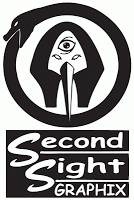
Okay, I have some good news, and I have some bad news.
The good news is that I’ve conquered my problem revealed in the Day Nine post. I was distracted by mentally writing these blogs while I was supposed to be meditating, messing up the whole experiment. This blog has been tremendous fun and proved to be a great way for me to stick to this thing, but the fun of journaling the experience was beginning to overwhelm the point of the experiment itself. So I had to pull back from it until I could figure out how to get that part under control. I let it go for a few days, and then started up again to reboot my mental battery. The good news is that the eye trick… quickly glancing down to the left and then promptly focusing back on the fovea spot… works like a charm. I now treat all such stray thoughts and daydreaming as if they are threshold visions, and the trick immediately snaps my concentration to heel. It’s easy as pie. Good news, right?
The bad news is that the eye trick works on the daydreaming distractions every bit as effectively as it works on the threshold visions.
Or potential bad news. In the beginning of this, I only took the pyramid texts’ instruction in their most literal sense when it warned about allowing illusions to distract me from my goal of opening the mystic Third Eye, and it didn’t occur to me that other distractions from even within my own normal, day-to-day thoughts could be considered in this group. Of my nine previous posts journaling my meditation attempts, at LEAST half of them featured me writing the next exciting episode while I was doing it. Have I already pissed off my immortal half and alienated it to the point of refusing to open the Third Eye for me?
I have no idea.
But I know how I can find out. If I manage to get to the event horizon… the pure, inky black stage (as described by Clesson H. Harvey and others) that I will see just before the Wisdom Eye opens… and end up staying right there for the next 50+ years or whatever of meditation sessions, then I will know that I messed this whole thing up royally before I even got started. My bad. But I don’t know at this point if that is the case or not. Perhaps it’ll forgive me as long as I don’t do it again. We’ll see. All I can do is put in the time.I’ve meditated three times now since last I talked to you. Each time I stayed focused and clear-headed by not writing a blog or anything else by doing the eye trick. Just as diligent as I am when the threshold visions appear, I treat any such mind wanderings during the meditation as enemies as well. The hour is peaceful, and in all three times I’ve achieved the Stage One state of the swirly blue nebula thingy. As far as I know, all is well.
Now we're back on track. See you later for Day Eleven.
Published on September 27, 2013 06:06
September 21, 2013
Awakening the Atrophied Eye - DAY NINE
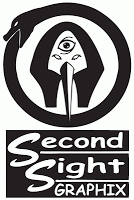
I have a problem.
I noticed it a few posts ago, but it didn’t occur to me that it would be a real problem. Now I can’t deny it, and have to figure out how to get this under control.
I’m writing while I meditate.
Instead of concentrating fully on what I’m supposed to be doing, I’m gathering notes and composing what my next blog is going to say. That’s NOT good. It explains why sometimes cool stuff happens and why sometimes it doesn’t. So it doesn’t matter whether I’m meditating for an hour or not if I’m not really paying attention to what I’m doing. It’s not the power of perception; it’s the power of journalizing the experience, really.
I have to figure out how to shut that side of my brain off when I’m meditating. I did it for an hour today, such as it were, but I spent the time plotting out the next blog. When I realized what I was doing… basically sabotaging my project… I still didn’t stop. I was reluctant to let go of the material I had composed at that point and risk forgetting it.
Like I said, not good.
Why wouldn’t my immortal half consider that a form of paying attention to the threshold visions instead of focusing on meeting it? You see what I mean? What’s the difference between mentally writing a blog versus focusing on some illusory phantasms designed to lure me off the path to see if I’m serious or not?
Alright. Okay. I can beat this. Surely there is some strategy I can take. Maybe doing the looking down to the left trick will snap me to heel on that as well? I’ll try it for the Day Ten session. In the meantime I’m going to brainstorm some other workarounds in case that isn’t considered a form of threshold vision and isn't so simple to defeat.
Published on September 21, 2013 10:03
September 20, 2013
Awakening the Atrophied Eye - DAY EIGHT
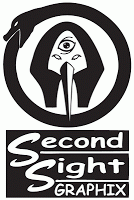
Correct meditation.
I keep calling it that because the meditation technique I’m using here is very old. Old enough to be the actual source of meditation in the world. At the time that group of five pharaohs initiated the project for permanently recording the ancient data upon those groups of granite stele in Saqqara, the papyri scrolls they were transferring the knowledge from were already ages old... old enough for the papyrus to crumble, and you know how long that stuff holds up. It’s highly probable that the information had already been recopied onto fresher papyri numerous times even at that point. With a greater respect for the data than their forebears, these pharaohs finally had the knowledge writ upon more durable stuff.
And for many centuries, adepts from all over the world traveled to glorious Egyptto learn those secrets, that were available only to the kings, high priests, and other privileged classes, and took them back to their distant lands where they also carefully guarded them within the walls of secrecy. They would set them at the very top of mountains of long, tedious, and difficult rituals, wrapped within exclusive secret societies with initiation rules so difficult and crazy, that few in their right minds would wish to subject themselves to it. Everyone who brought the knowledge back from Egypt did this. Consequently, not only have few people ever opened their Third Eye over the aeons, but the meditative techniques that are commonly known in the world are but various versions of the secret society techniques at their different stages, as the groups deliberately hid not only the correct way to do the Egyptian technique from the lower ranks, but of course hiding the very purpose of meditation itself until the hopeful adept reached the top of the rank structure ladder.
So common meditative techniques are not the real thing, despite having some ancillary value such as enabling the focused practitioner to achieve calm, relaxing states of stress release, but without the true point of what it is actually for, it’s really just busy work.
Very, very few of the followers of second sight throughout history have generously recorded their spiritual experiences for posterity, but without a straight forward terminology base to describe the experiences with, the unenlightened hopeful would struggle to puzzle out what those “deep” sounding descriptions were trying to say. In The Short Path, Clesson H. Harvey demonstrated how one who actually had the experience could decipher the descriptions in the old texts and reveal their meaning, while also comparing them to what the pyramid texts describe. He was also able to point out examples in other texts that were written by adept hopefuls who had not opened their Third Eye, but were using source material from the other guys to compose their own indecipherable “deep” works.
According to the pyramid texts, in order to meditate correctly, one must do the following:
Get enough sleep.Relax in a comfortable place that is quiet and without distraction.Breathe through your mouth and nose at the same time, slower on the inhale, faster on the exhale so that the noise your escaping breath makes sounds similar to saying the nonsense word “sah.”Then you focus on an area roughly six inches in front of your brow, where the fovea spot is located. You will recognize it as a faint, glowing dot that gleams like a pale star even in total darkness. The novice may have trouble pinpointing it exactly because of the interference of surrounding visual purple cells and regular eye “tv noise” dots in the way, but simply focus in that general area… grab a small chunk of the cells you find there with your focused vision… and begin just trying to will the cells still with your eyes alone. One of those small white dots will take offense at this rough handling and will skip away. THAT will be the fovea spot. Spend the next hour grabbing it with your eyes and attempting to hold it still, and continue to do that every time it skips away.
And don’t forget to breathe.
To be clear, your eyes are open during the performance of correct meditation, as you’ve no doubt surmised from reading the posts thus far. It’s not a staring, death trance or anything; you are allowed to blink, but your eyes are quite open. It is a very active LOOKING. I used the phrase “Power of Perception” in an earlier post, paraphrased from the old anime Fist of the Northstar, and that’s what it is. It’s not a passive meditation technique at all like the common, lesser ones widely available, and it is very mental. You have to get enough sleep beforehand because it does require concentration. That’s why when I tried to meditate that one time when I was sleepy, my exhausted mind rejected the attempt, and I actually felt the discomfort of eye strain.
So again, to be CLEAR, your eyes are OPEN while performing the correct meditation of the followers of second sight. The truly remarkable fact about all of this is that… finally… the stranglehold that the monopolies and cartels of the ancients who had long prevented this knowledge from being placed in the hands of the common folk is now broken. Thanks to the power of the Internet, anyone can have access to this information, and any and everyone can become enlightened if they want to. Despite the trickery of the world’s secret societies, it turns out the technique to have the most remarkable spiritual experience possible is actually extremely simple and easy, and achievable by anyone at all. That is a blessing that should be obvious to everybody. The raw simplicity of it implies that it came from God… possibly part of the revealed scripture given to Adam, the patriarch himself. How awesome would that be? Very!
As a side bar, in that same anime mentioned above, when the character Ryakin said “Perception is the key for unlocking the intangible power of the spirit!” I was totally like WHAAAAAAAAAAAAT?! The writers of this thing found the secret!!!” But then the same character said, “Power without perception is spiritually useless, and therefore of no true value,” giving a different meaning to his usage of “perception” revealing it was just “deep” talk, and not the straight forward language needed to get to the friggin’ point by someone actually in the know.
Anyway, Day Eight’s session was successful in the sense that I meditated a full, true hour interrupted only by my cell phone alarm. “You can go now, Ed Harley. Now it begins,” to quote Haggis from the movie Pumpkinhead. lol Now I can start making REAL progress. It’s ON. I’ve reached my biggest short-term objective. Now the only objective left… other than consistently doing this until The Night of Power next year… is to reach the event horizon of the stage just prior to the Third Eye opening or when/if it actually opens for me. But the blue swirly-do didn’t appear for some reason. I have no idea what that means. I’m not sweating it though.
Maybe it'll appear on Day Nine.
Published on September 20, 2013 00:54
September 19, 2013
Awakening the Atrophied Eye - DAY SEVEN
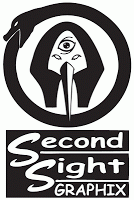
A friend did some digging and discovered that Clesson H. Harvey passed away last year in October. Even though I knew he was elderly, it still shocked me. I decided not to be sad about it though, because he obviously had a really good life. I’m honored that he was able to touch me through his work. He traveled all over the world, and experienced all kinds of amazing things. He even had that rare spiritual experience that is now the focus of my blog. He published his latest book, Opening the Door to Immortality, in June of last year which, judging from the description on his website, was clearly his life’s work. Four months later and he was dead. “Must… *GASP!* …publish… book…!” *plop* That’s deep. He’s been working on translating the pyramid texts of Saqqara, from his more qualified perspective as an expert on meditation techniques and a follower of second sight, for quite a while now. Then when he finally finished it, it was ALL over. Something like that makes me blessed that I’ve found my calling as a cartoonist early in life, and that I’ve found the thread of the tales that I wanted to create pretty early as well. I’m glad I finished Monsters 101 at 42 years of age as opposed to 82 or 92. I’ll be starting Wild Hunt: The Aspects of Death, the second part of my greater masterwork saga, at around this time next year, God willing. I think something like this will help me get off my butt and make sure I complete it in a timely fashion. I like striking items off of my to-do list anyway. One day, back in 2005, I decided to reach out to Harvey. I wanted to probe to see what his opinion was of other spiritual interests of mine, and perhaps draw him into a long-term discussion, and possibly even a friendship. Maybe I was also looking for a “guide” too since I had been too chicken shit or whatever to just sit and follow through on the correct meditation technique he uncovered.
----- Original Message -----
From: "Muhammad Rasheed"
To:udjateye@earthlink.net
Sent: Tuesday, October 25, 2005 7:51 AM
Subject: [Norton AntiSpam] The Scroll of Toth
Mr. Harvey (or is it "Dr.?") [Just Mr.],
Thank you very much for sharing your research in how to attain Enlightenment by applying the techniques for opening the Third Eye. Your dedication and research are impressive and your findings are AMAZING. I do have a question, if you please.
I am somewhat disturbed by the fact that those who developed these techniques are gone "without a trace." In the Holy Scriptures God makes it clear that He wiped out whole nations routinely when they indulged in paganism and the subscribing of partners to him. I recognize the "science" within the udjat meditative techniques, but how can we be sure we are not crossing a line that will displease the Creator? What are the parts that show you "science" and the parts that reveal "blasphemy?"
I will appreciate the sharing of your opinion on this matter. Thank you for your time.
Your friend,
M. Rasheed
http://www.mrasheed.com
See where in the response he inserted “Just Mr.?” That’s actually my first time noticing that. lol Not really surprising since his response kind of shook me a bit.
From: udjateye@earthlink.net
To: muhrasheed@hotmail.com
Date: Sun, 30 Oct 2005 01:08:25 -0700
Subject: Re: The Scroll of Toth
CHOOSING ANYTHING FROM THIS ILLUSORY WORLD OF WAKING/DREAM, INSTEAD OF FINDING AND PREFERRING THE IMMORTAL STAR (6 INCHES BEFORE THE BROW) IS IN FACT THE ULTIMATE ACT OF BLASPHEMY!!!
YOUR FRIEND,
C. H. HARVEY.
Unfortunately my Sent box stops in 2006 and I no longer remember what I said in response. I remember attempting to draw him into a discussion about it but he didn’t respond back that time. Maybe my first post offended him or something. lol He was clearly yelling at me. lol This was a week or two before I started hanging out on message boards and stuff, but even then I knew what all caps meant. God isn’t part of the illusory world, Mr. Harvey. I took the hint and left him alone. But I’ve been thinking about his response over the years, comparing it with the message of scripture. “The men on the heights.” It is unclear whether the men on the heights will be judged. Why aren’t they in one or the other groups? Perhaps they will be judged first? Perhaps they were judged during the process of the Third Eye scrutiny? Here’s the thing: When the Eye opens, it will show you stuff. Stuff you will need… that your immortal half feels you need… in order to make your journey better in some way. That’s the reality of it. In my comic book world, of course, I have all kinds of other stuff happen, too, but that’s just what I need for my action/adventure/fantasy narrative to be more exciting for the genre base. If you decide not to heed what your immortal half shows you, and reject the message of God and sow mischief in the earth, then things will not go well for you on the Last Day, whether you open the Third Eye or not. I wonder if the men on the heights represent the righteous believers of God who ALSO happened to be followers of second sight.
I only meditated for about thirty minutes today… I don’t know why I stopped… and this time the blue glowy thingy stayed behind that grayish veil again, but I could still see it. I wonder what the veil means/represents? Are there different layers of fabric I must penetrate in order to finally see? “Freedom is seeing,” as my mom used to say. "Seeing things as they really are." So is being wise.
I still feel like I'm making steady progress though. So far, so good.
Published on September 19, 2013 05:10
September 18, 2013
Awakening the Atrophied Eye - DAY SIX
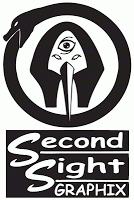
Sorry, I spent most of the day rescuing the broken links for my Monsters 101 reviews. I have no idea how long they were like that. Sucky. Gotta catch you up on what you’ve missed in the last couple of sessions.
First of all, I almost meditated a full hour on the Day Six one. That’s pretty cool. I was NOT expecting to get anywhere close to that this early. Fun! Started at 5:12am and stopped at 6am when my get-up-for-work alarm went off.
Second, I reached that Stage One finally, just like before back in 2002. It was that full, swirling blue phenomenon, looking like a cosmic star nebula moving in real time. It’s really pretty and majestic looking. And it stays, it lingers. When I wrap up the session and get up it’s still floating there in my face! No matter where I look, and even when I close my eyes. I noticed it doesn’t interfere with the fovea spot at all. The fovea spot sits on top of it like a Photoshop layer. I didn’t think to notice if I could still see that faint corona around the fovea spot area though. This was a really successful session.
There are these verses in the Qur’an that have been on my mind since I first discovered this stuff. It’s God describing a scene in the future that takes place during the Day of Judgment. The judgment itself hasn’t taken place yet, but the two groups… the unrepentant hellbound and the righteous believers… will be separated in two camps:
The Holy Qur’an – Surah 7:46-48 46 Between them shall be a veil, and on the heights will be men who would know everyone by their marks. They will call out to the Companions of the Garden, "Peace on you." They will not have entered, but they will have an assurance thereof.
47 When their eyes shall be turned towards the Companions of the Fire,
they will say: "Our Lord! Send us not to the company of the wrong-doers."
48 The men on the heights will call to certain men whom they will know from their marks, saying: "Of what profit to you were your hoards and your arrogant ways?"
Who are these “men on the heights?” No one knows. There’s a ton of speculation of course, but it’s one of the secrets of the unseen; no one will know for sure until the event itself takes place. I like to think they are the people who’ve learned to open their Third Eye, with the “knowing them by their marks” representing wisdom and some enhanced powers of insight in some way. And what are these “heights?” It’s fascinating and really cool to think about it, but there are no answers here. But I hope they are the followers of second sight, enlightened by their glimpses behind the fabric of the terrestrial realm, causing them to ascend from mere belief into the Know. Wouldn’t that imply they’ve overcome the judgment state? Maybe. Only if they made sure to do what they were supposed to when they weren’t delighting in entering and acting within the UDJAT Wisdom Eye.
Published on September 18, 2013 12:40



